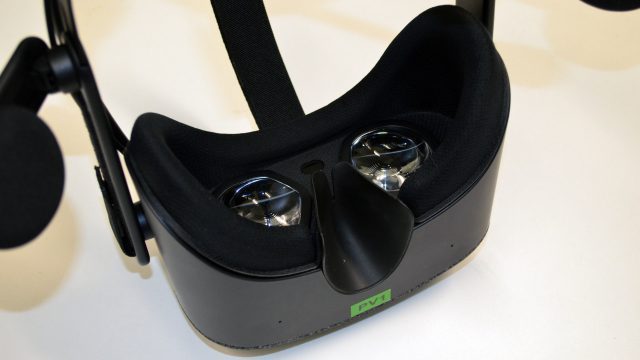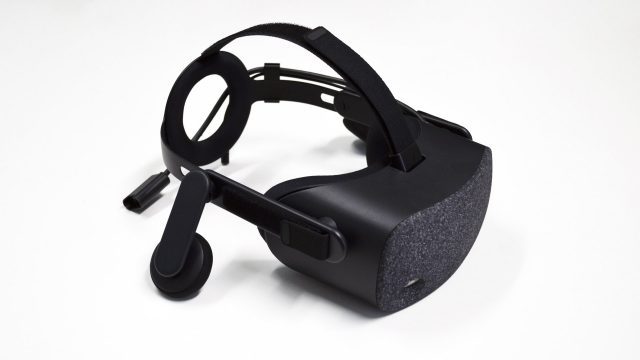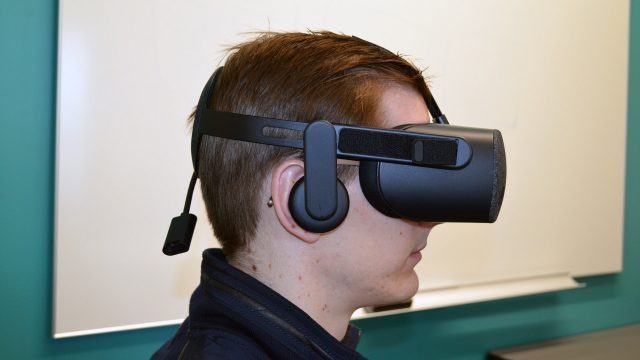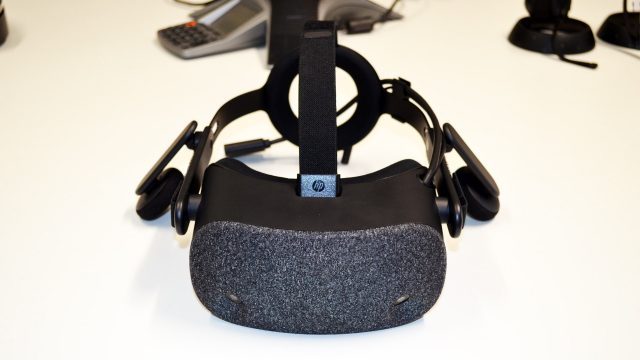Back on the topic of the display type, there’s of course pros and cons to OLED and LCD, with the former typically known for having richer colors and higher contrast. And while I’m used to seeing LCD displays in VR headsets which look notably ‘washed out’ compared to OLED headsets, the display in Reverb actually looked surprisingly saturated compared to what I was expecting. I’ll need to get the right content into the headset and put it side-by-side with an OLED headset to really feel this out, but so far it seems like the display in Reverb is quite capable and reasonably well suited for VR.

On the lens front, HP says the Reverb lenses are new and improved. The company claims they’ve increased the volume of the eye-box (sweet spot) by 33%. Without more time in the headset I can’t give a good assessment of how the sweet spot compares perceptually to other headsets, but it didn’t stand out to me as being significantly better or worse than similar headsets.
Reverb has no lens-to-eye distance adjustment or hardware IPD adjustment. IPD is set to 63mm nominally, and this can be adjusted ±8mm in software.
The other big part of Reverb is its overhauled design. This is a drastic departure from HP’s prior VR headset. Reverb looks very much inspired by the Rift, right down to the slender headphones, though HP assures me that the circle on the back of the headset was used because they found it to offer the best fit (and not because they needed a different shape to ensure distinctiveness from Rift’s triangle rear strap).

When I asked how the company approached ergonomics for the headset, HP told me that they started with testing the fit against a library of mannequin heads of different shapes and sizes, and then moved to testing on real people around the company.
The adjustments are what you’d expect: two velcro straps on the sides and one on the top, while the front visor is hinged at the connecting arms to accommodate the angle of the face.

Surprise, surprise: Reverb feels a lot like a Rift when you wear it (which is a good thing, unless you hate how the Rift feels). It feels quite light on the head, though it actually weighs a bit more (500 grams) than Rift (470 grams). I’ll need to spend more consecutive time in the headset to really feel out the long-term comfort, but the initial impressions are good, though unfortunately the visor doesn’t flip-up as with the original HP headset.
If you’ve read this far you might wonder why I haven’t talked about tracking yet, and there’s a good reason. HP says that the tracking system—the same inside-out tech that’s on all Windows VR headsets—is pretty much unchanged, including the use of the same old controllers. That means tracking performance should be right on par with every other Windows VR headset.

Generally speaking, the inside-out head-tracking shared by the Windows VR headsets works very well with low latency and robust positioning. Controller tracking leaves a bit to be desired as the controllers get lost momentarily from time to time when you turn your head away from them (because the controllers can leave the camera’s field of view), and this could range from a minor annoyance to a game-ruining moment depending upon which app you’re using. As HP has primarily designed Reverb for enterprise customers, it’s likely to be more of the former than the latter, while consumers playing complex VR games might see some of the reverse.
– – — – –
With a big improvement in resolution and an all new design, Reverb looks to have positioned itself as the new king of the Windows VR headsets, and may well steal a few glances from original Vive owners looking for their first upgrade, or businesses looking to save some cash over the Vive Pro’s pricier offering.






